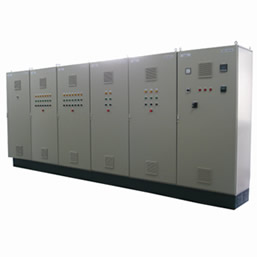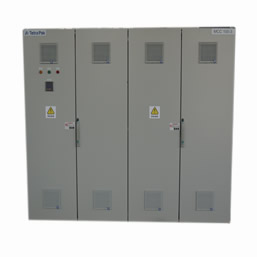China's integrated circuit industry urgently needs to go out
Article provenance
:Online Time:2019-07-17 17:02
Wei Shaojun, Vice President of China Semiconductor Industry Association
The National Integrated Circuit Industry Development Promotion Program has been officially released and implemented, which has attracted great attention in the industry. As far as the current situation is concerned, there is still great pressure on the development of China's integrated circuit industry, which is reflected not only in the gap with the advanced international level, but also in the challenge posed by the current trend change of the international semiconductor industry to China's IC.
Great gap with international advanced level
The level of design industry in China is basically synchronized with that in other countries, but most of the key chips are imported, and the technological progress is seriously lagging behind.
Generally speaking, there is a big gap between China's IC industry and the international advanced level in design, manufacturing and packaging.
According to the statistics of IC Design Branch of China Semiconductor Industry Association, the annual revenue of IC design industry in China in 2013 was 87.448 billion yuan, or 14.2 billion US dollars, an increase of 28.51% over the previous year, accounting for 16.73% of the global IC design industry. In 2013, 124 IC design enterprises sold more than 100 million yuan, 134 enterprises. Sales volume ranged from 50 million yuan to 100 million yuan, sales volume of 177 enterprises ranged from 10 million yuan to 50 million yuan, sales volume of 196 enterprises was less than 10 million yuan, sales volume of 409 profit-making enterprises and 223 non-profit enterprises. The average gross profit rate of the top 100 design enterprises was 30.59%, and that of the top 10 design companies was 39.55%. Synchronized with foreign countries, it has reached 28nm, but many key chips, such as desktop, portable computer, high-performance server, high-end network equipment chips are almost all imported.
According to the statistics of China Semiconductor Industry Association, the annual revenue of China's chip manufacturing industry reached 60.86 billion yuan in 2013, slightly less than 10 billion yuan, an increase of 199.9% over the previous year. The total revenue of local enterprises was 26.66 billion yuan, accounting for 58.7% of the total revenue of China's top 10 chip manufacturing enterprises (including foreign capital). China's chip manufacturing industry accounts for 44.37% of the total revenue. There is a huge gap between the current capacity and market demand of China's chip manufacturing industry, and the technological progress is seriously lagging behind. In terms of advanced technology, there is only one MCI with advanced manufacturing technology (line width below 40 nm). The technology level is 1.5 generations different from that of the international advanced level. In terms of capacity, less than 50,000 silicon wafers per month are produced in all 12 inches. Tianjin Zhonghuan and Jilin Huawei are the top ten manufacturers, while Xi'an Microelectronics is mainly engaged in aerospace devices and integrated circuits.
Even in the packaging industry, there is still a gap between Chinese enterprises and the international advanced level. According to the statistics of China Semiconductor Association, the annual revenue of packaging industry in mainland China in 2013 was 109.885 billion yuan, or about 18 billion US dollars, an increase of 6.1% over the previous year. The total revenue of domestic enterprises was 19.06 billion yuan, accounting for 43.03% of the total revenue of 44.29 billion yuan and 17.35% of the total revenue of packaging industry in China. (3-D packaging) only one of Jiangsu's trendy science and technology. Up to now, China has not been able to manufacture more than 1200 high-density integrated circuit packages with Bumping engines, and the technology level differs from the international level for more than five years.
The reality of "two outside" is grim
The products of IC design enterprises are mainly processed overseas, and the main business of manufacturing enterprises is also overseas, which is a dilemma facing the industry.
The development status of IC industry has led to the severe reality of "two outsiders" in China's IC industry, that is, the products of IC design enterprises are mainly processed overseas, and the main business of IC manufacturing enterprises is also overseas.
Based on the gross output value of China's integrated circuit design enterprises in 2013 of 14.2 billion US dollars and the gross profit margin space of the design enterprises of 30%, it can be concluded that the capacity demand of China's design enterprises is 10.9 billion US dollars. It is further assumed that 50% of the products of enterprises can be processed in Mainland factories, that is, 5.45 billion US dollars. In terms of recalculating chip manufacturing enterprises, in 2013, 40% of Zhongxin International's production capacity served domestic enterprises, i.e. about $900 million; about 15% of Huali's production capacity was domestic, about $30 million; about 80% of Huahong's production capacity was domestic, about $400 million; about 30% of Wuhan's new core's production capacity was domestic, about $45 million; % The capacity is used domestically, about $540 million. The total capacity of China's OEM industry serving domestic design enterprises is about 1.915 billion US dollars. Finally, it can be calculated that there is a gap of $3.535 billion between demand and supply between chip design and manufacturing in China.
This phenomenon is caused by a series of problems existing in China's IC industry itself. In IC design, design enterprises lack process knowledge and the ability to customize and modify process parameters; design enterprises rely on third-party IP cores to a very high degree; design enterprises do not establish internal design tools to maintain and develop teams, lack of talents and abilities to develop and optimize process according to their own products; design enterprises have high dependence on third-party IP cores. Most of the industries adopt the general ASIC design method, lacking the knowledge of customization and COT design. In IC manufacturing, most enterprises have not yet established a complete design service and support system; IP core R&D lags behind process development, and IP core development capability is weak; process R&D often relies on the support of foreign customers; and design methodology is not paid enough attention.
In short, both sides have greater external dependence. When the two meet, the situation of "two outside" naturally arises. This is the reality of China's IC industry.




